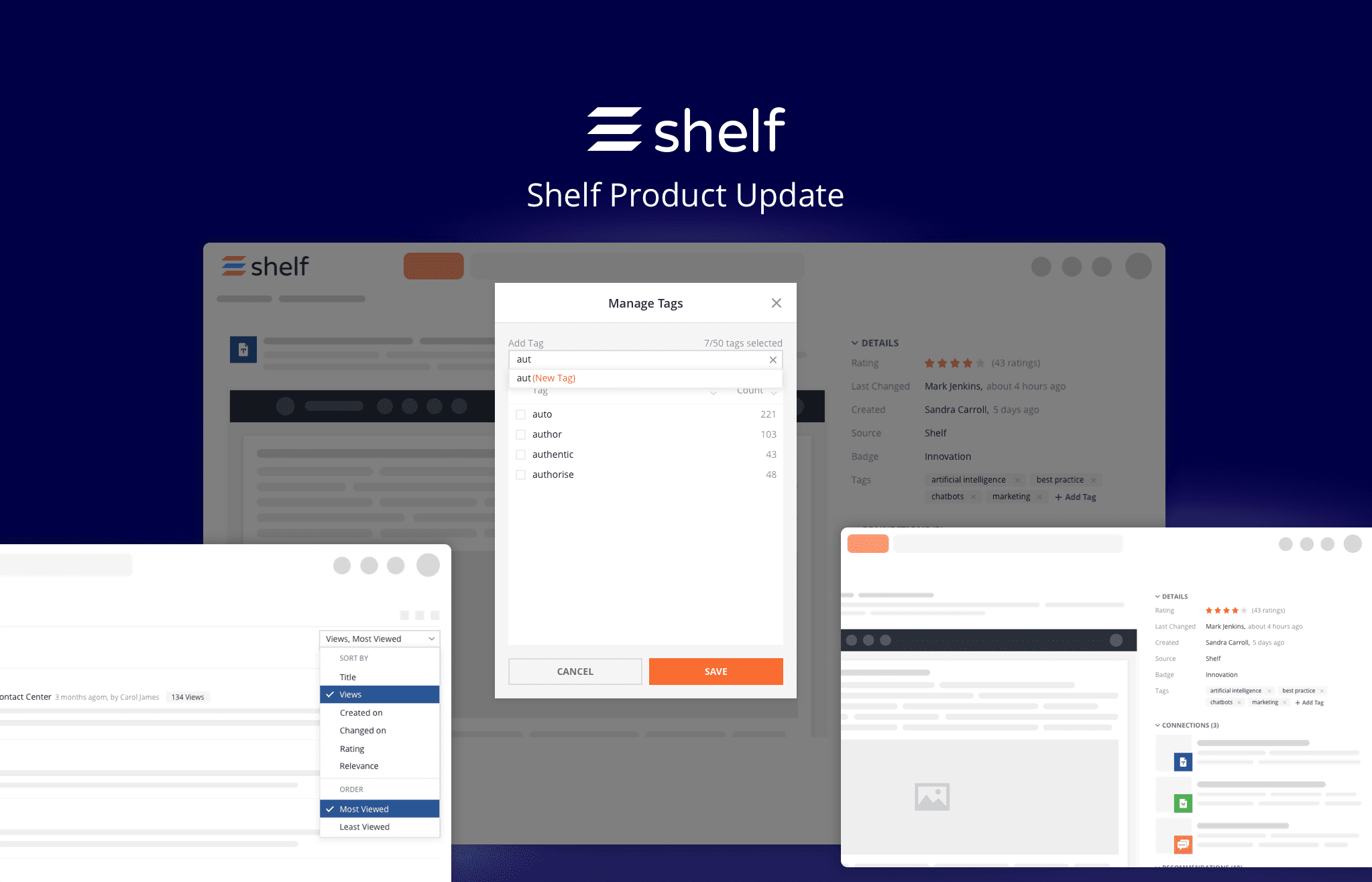Our first product update for 2019 includes improvements to finding content, easier access to meta information for individual pieces of content on the Gem Page as well as a brand-new tag library.
Sorting Results by View Count
Shelf’s powerful search algorithm makes it easy and fast to surface the most relevant pieces of information by combining full-text search with various contextual filters.
When running a full-text search, Shelf displays the most relevant content from your knowledge base first. When the list of results is long, adding contextual filters, such as by content type, by category or by tags is a great way to narrow down the results with a couple of clicks. Another option is to use sorting, for example by the highest rated or most recently updated. Now, a new sorting option is available that lets you list content in order of most (or least) views. That way, you can decide to explore the most popular content first.
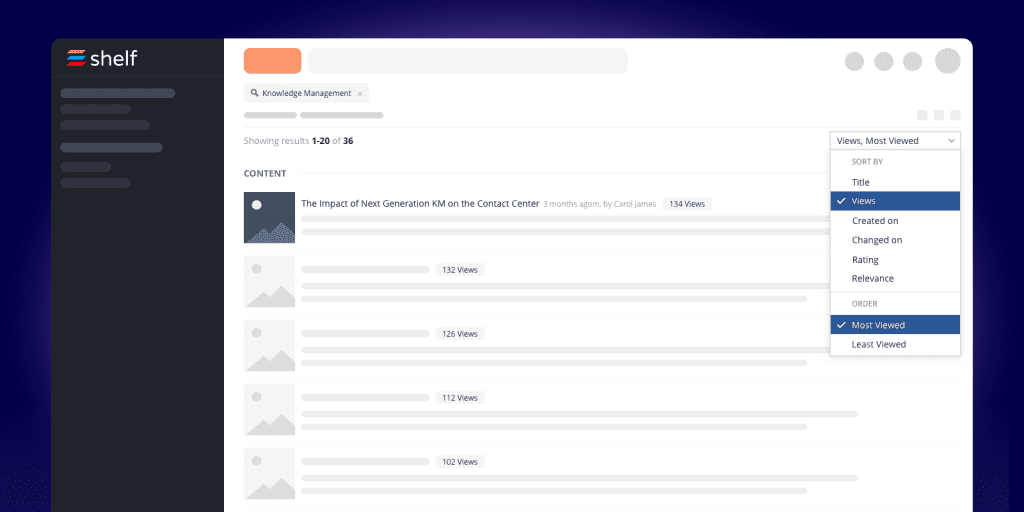
Sort Search Results by Views
Changes to the Gem Page
In Shelf, each piece of content is called a Gem. One of the unique features of Shelf is that many different types of content can coexist in the same libraries and folders. That includes Wiki Pages that you can edit directly in the App, Documents, Images, Links, Videos and more.
Recently, we changed the layout of the Gem Page slightly, to put more focus on the main content, such as a Powerpoint presentation, while maintaining fast access to supplementary information including the author, time of last change, the category and tags. All this supplemental information is now grouped together and displayed in the right sidebar in the Details section.
Another enhancement to the sidebar is that you can now collapse each section to reduce the amount of scrolling needed to get to other sections, such as connected content or related content that Shelf automatically recommends.
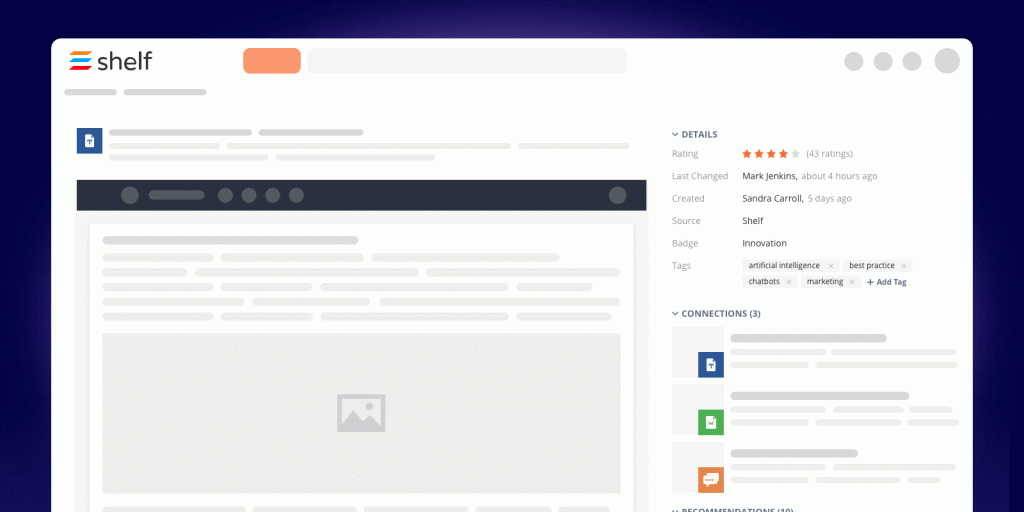
Collapsible Gem Page Sections
The Revamped Tag Library
Using a tagging system leads to higher productivity, saves teams time, and enables content to exist in multiple places at the same time. All content in Shelf can be tagged (or labeled). When a Gem is tagged, a contextual Tag Filter becomes available that helps you find content more quickly.
Our all-new Tag Library makes the process of filtering search results by tags more convenient. The Tag Library also lets you better control what tags can be used to avoid situations where too many synonymous terms are being used to label content.

Tag Library as Contextual Filter
Apart from a fresh new look, the new Tag Library adds some beneficial features to boost your productivity: Use text search to find the tags you’re looking for, both when using the contextual filters as well as during the process of adding new tags to your content. Use sorting to identify tags by alphabetical order as well as by how frequently they’re being used. When filtering by tags, only those tags that apply to your current view, such as a text search or a selected library, are visible to help avoid unnecessary selections.
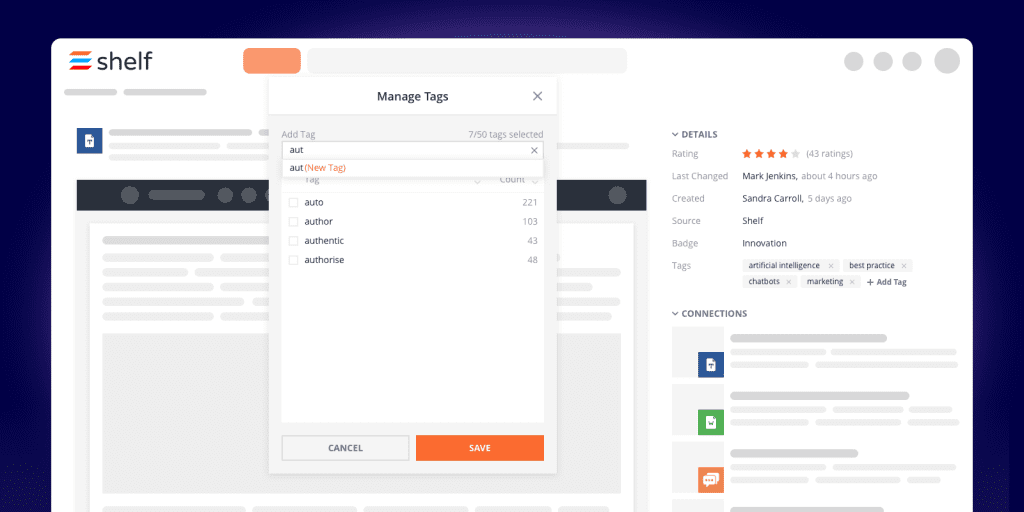
Tag Library on the Gem Page
And finally, you can determine which user roles are allowed to create new tags that have previously not been used. So you can retain tags as a structural component to your knowledge base that is more based on folksonomy yet still maintain control by only allowing particular users to introduce new labels.
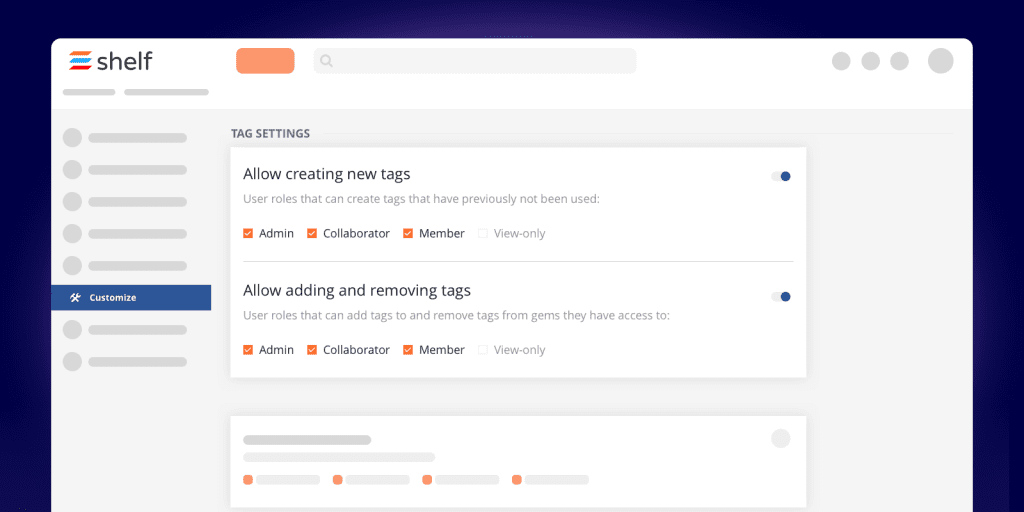
Customize Tagging Permissions
That’s a wrap for this product update. All changes are available on your Shelf already, and as always your feedback is most welcome. Thank you for reading and watch out for some more updates coming your way soon!
